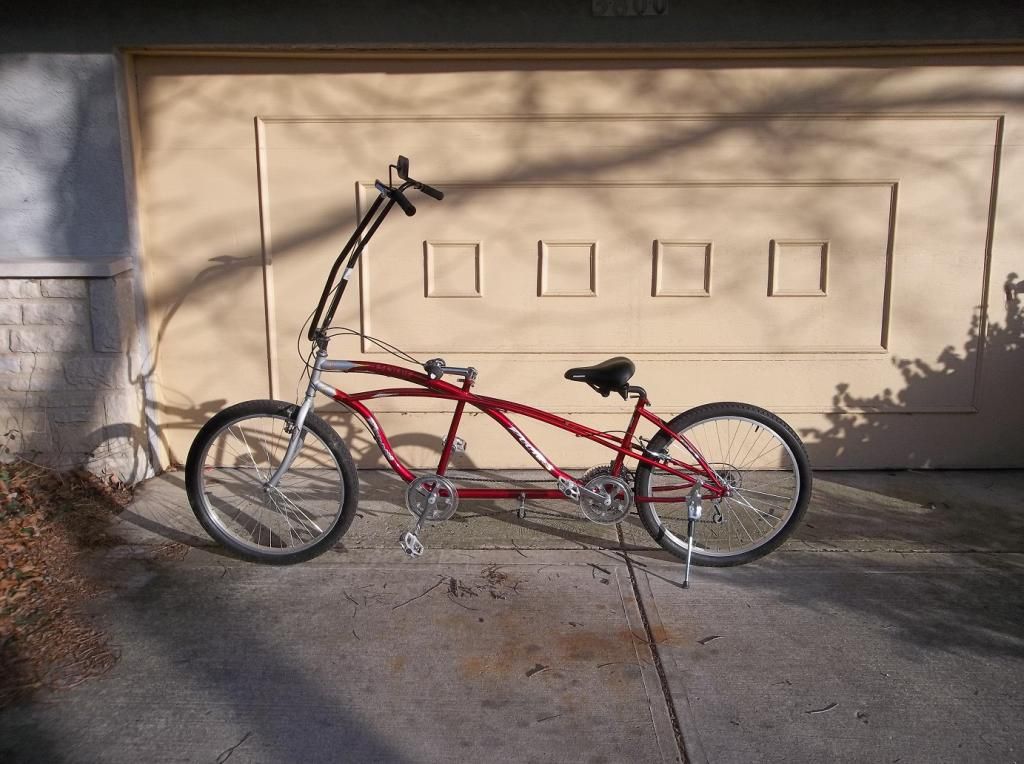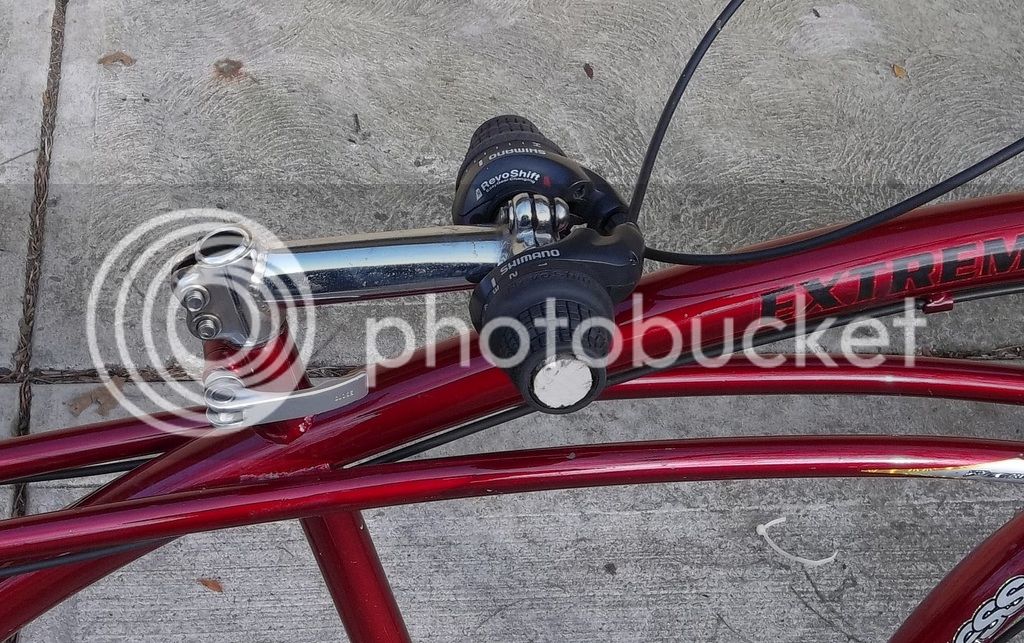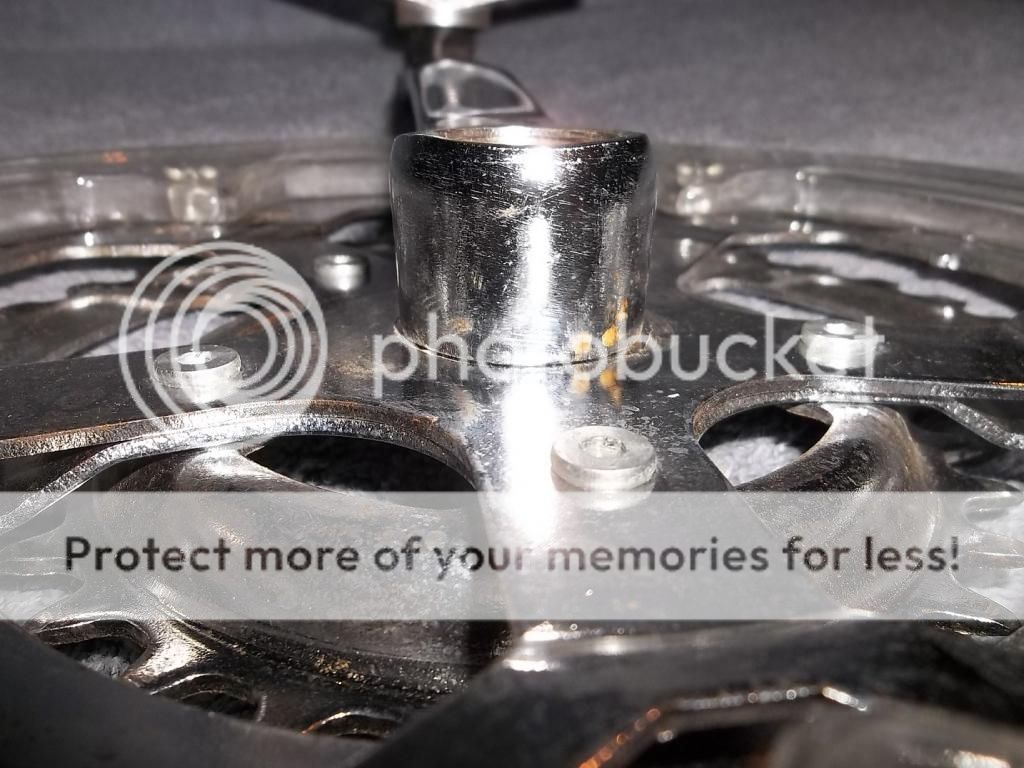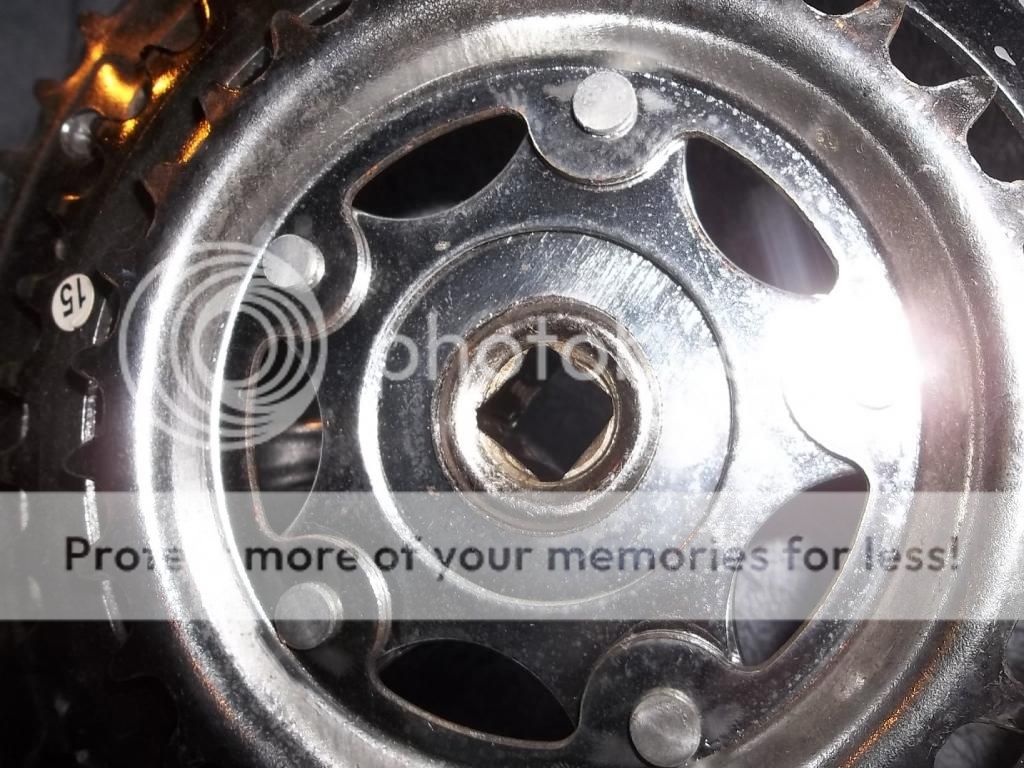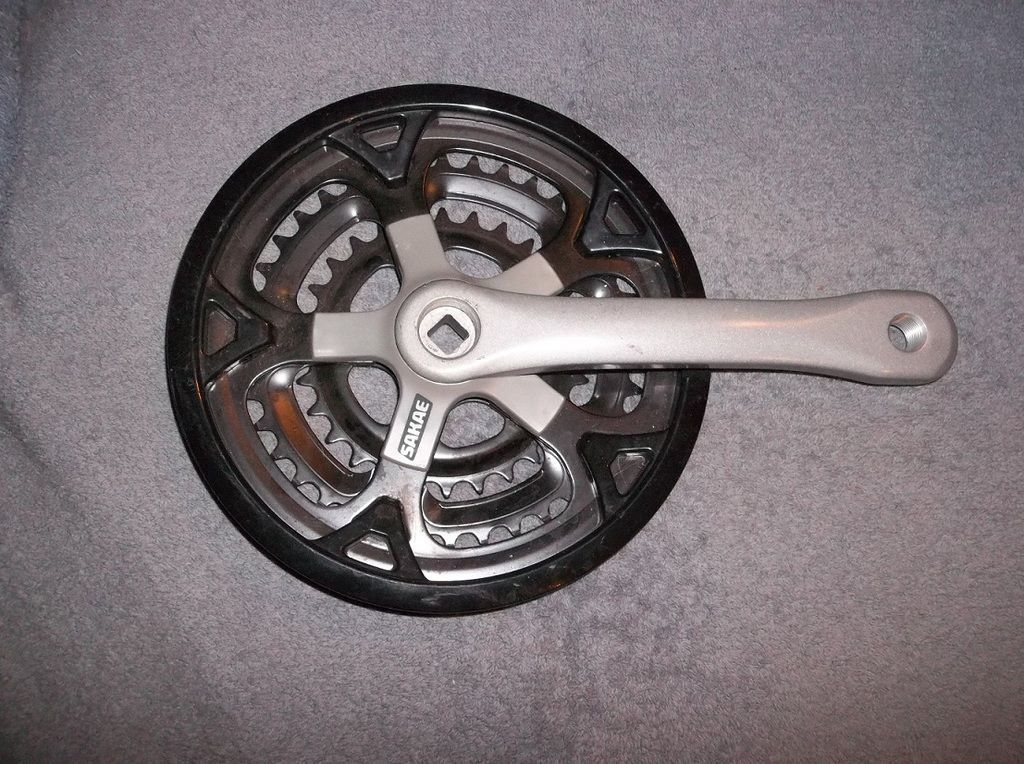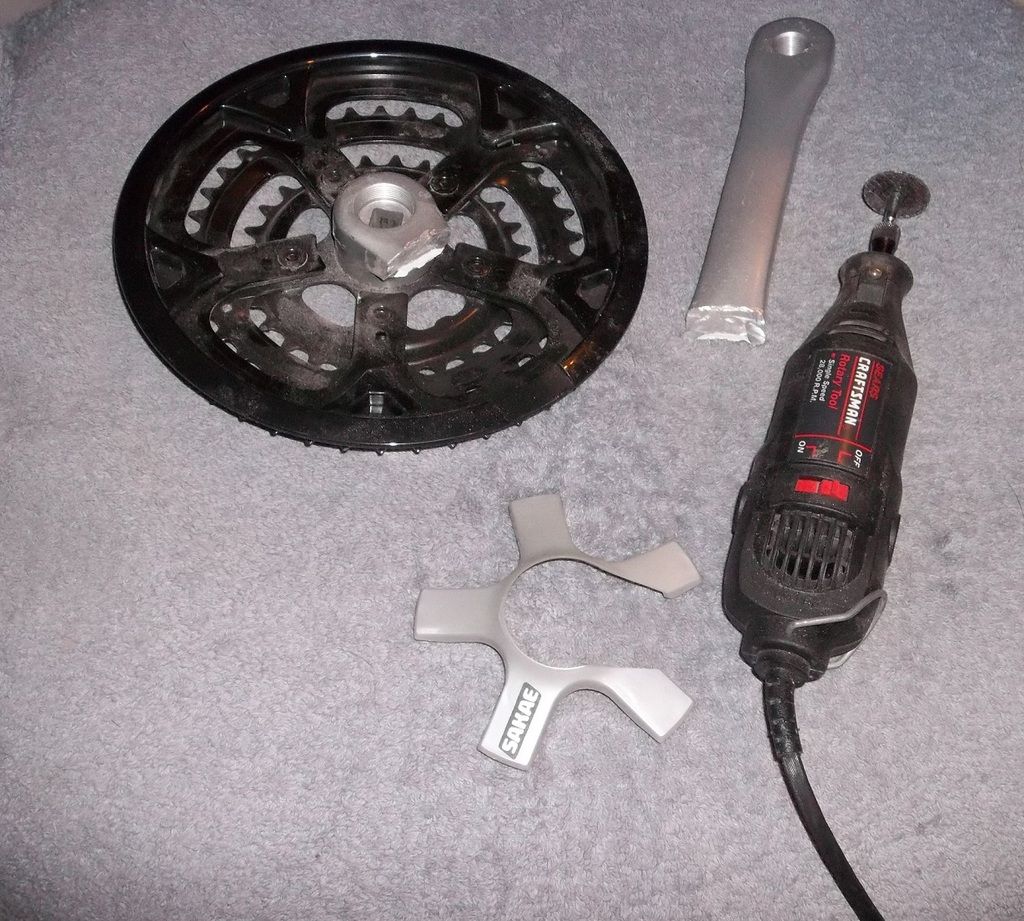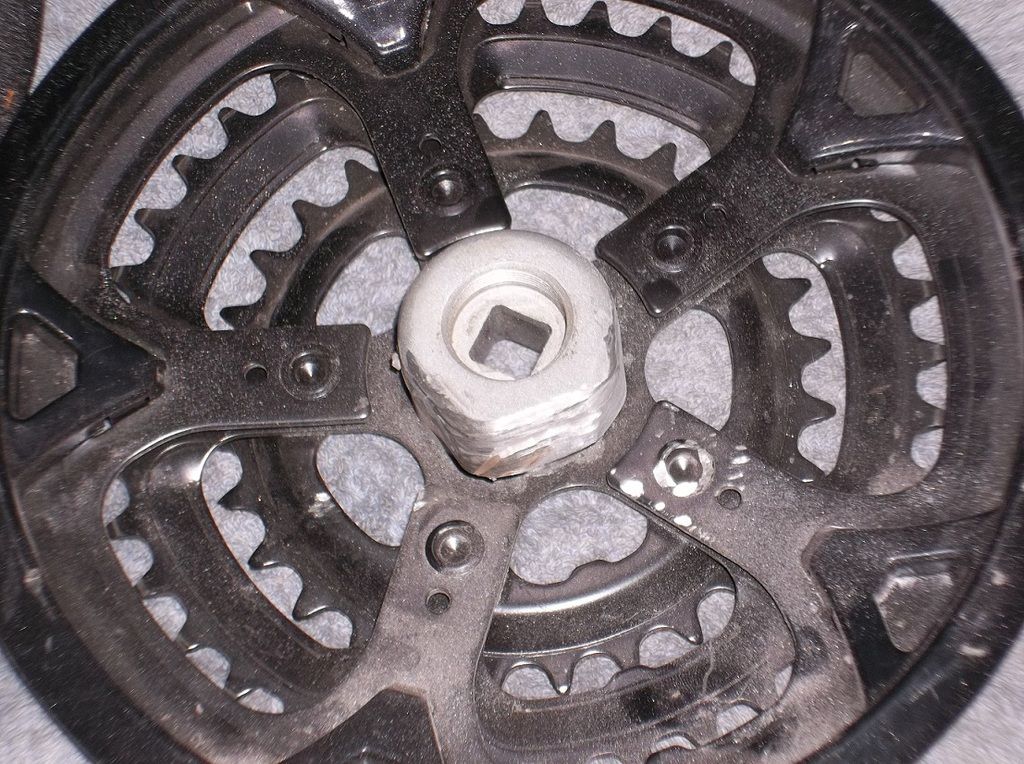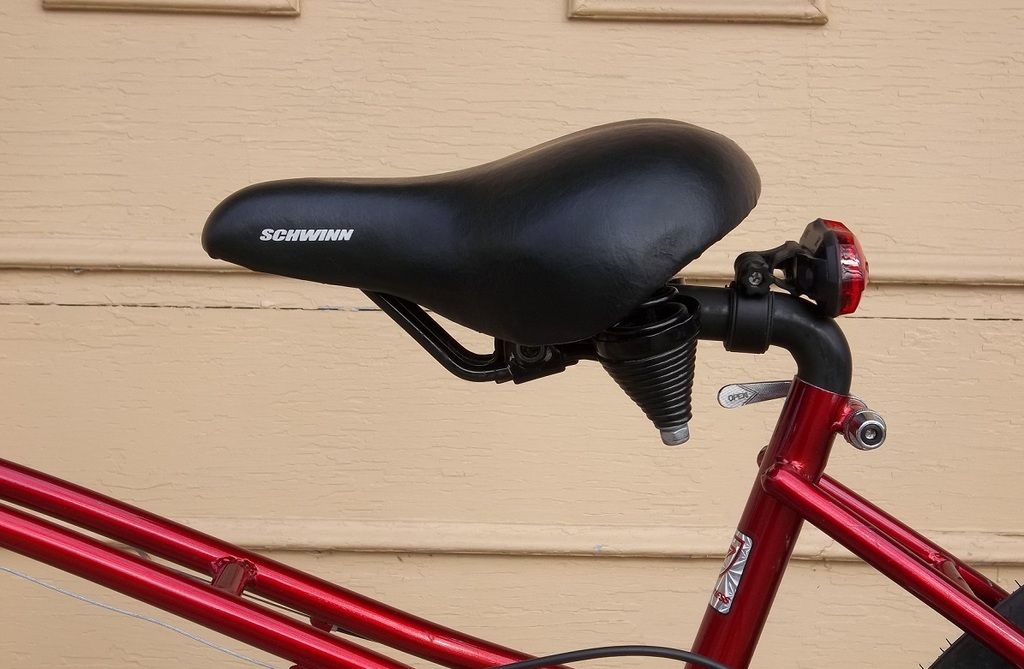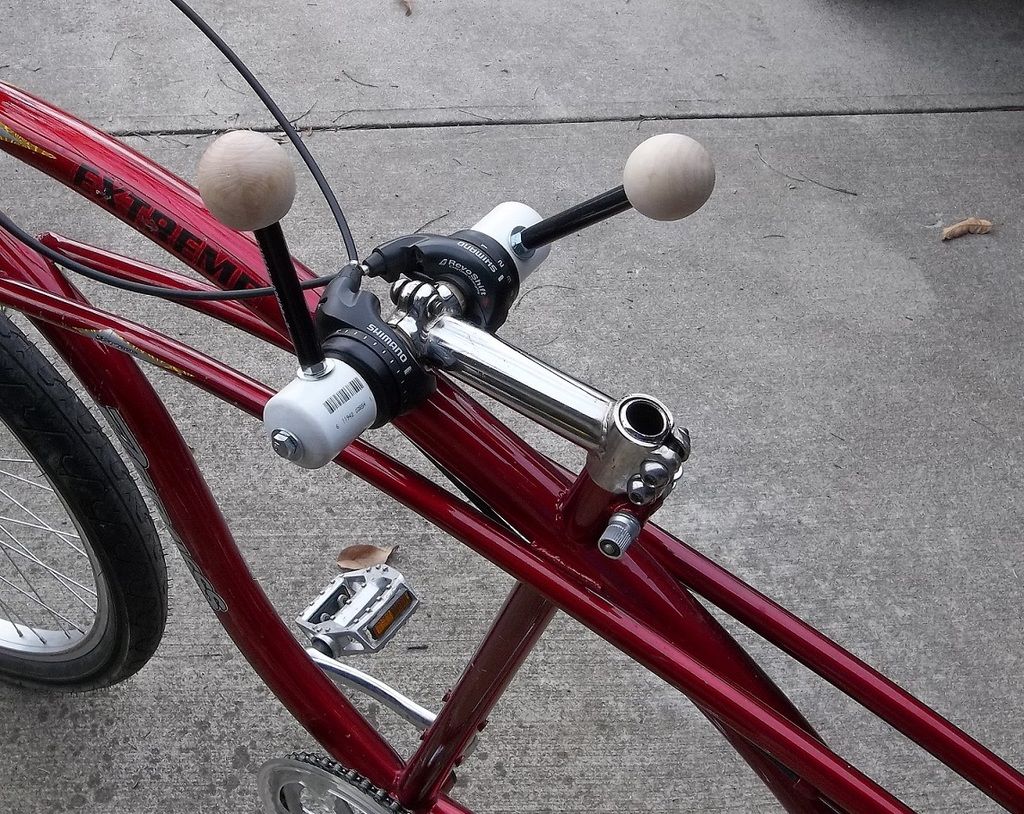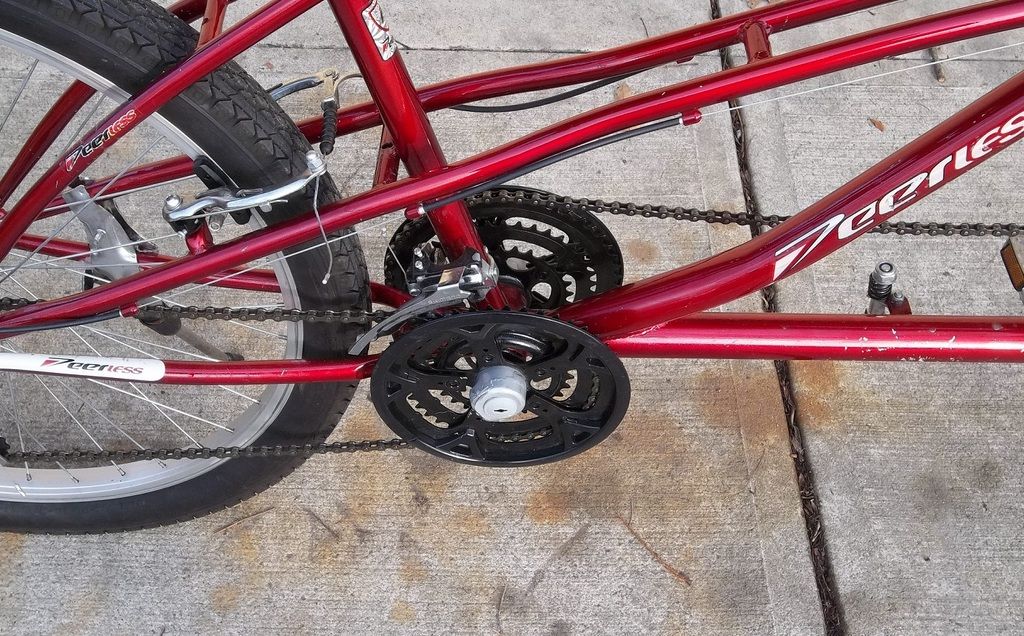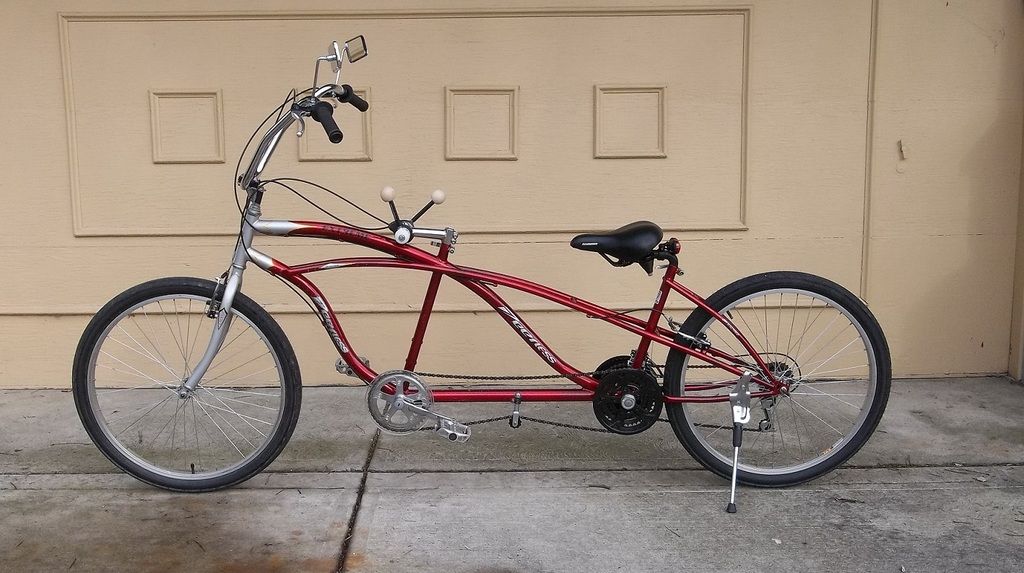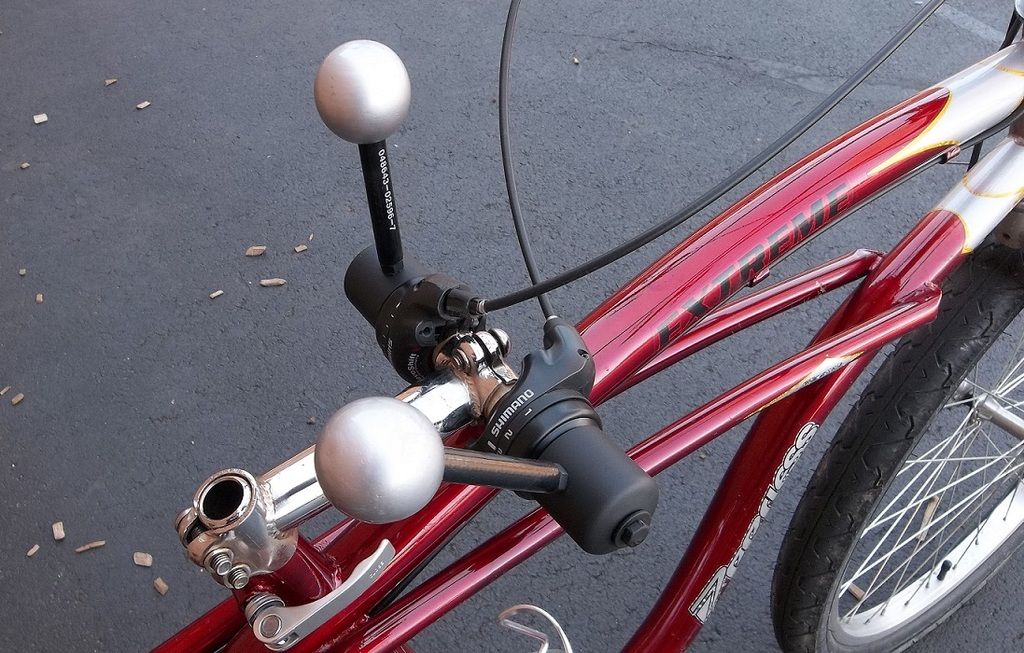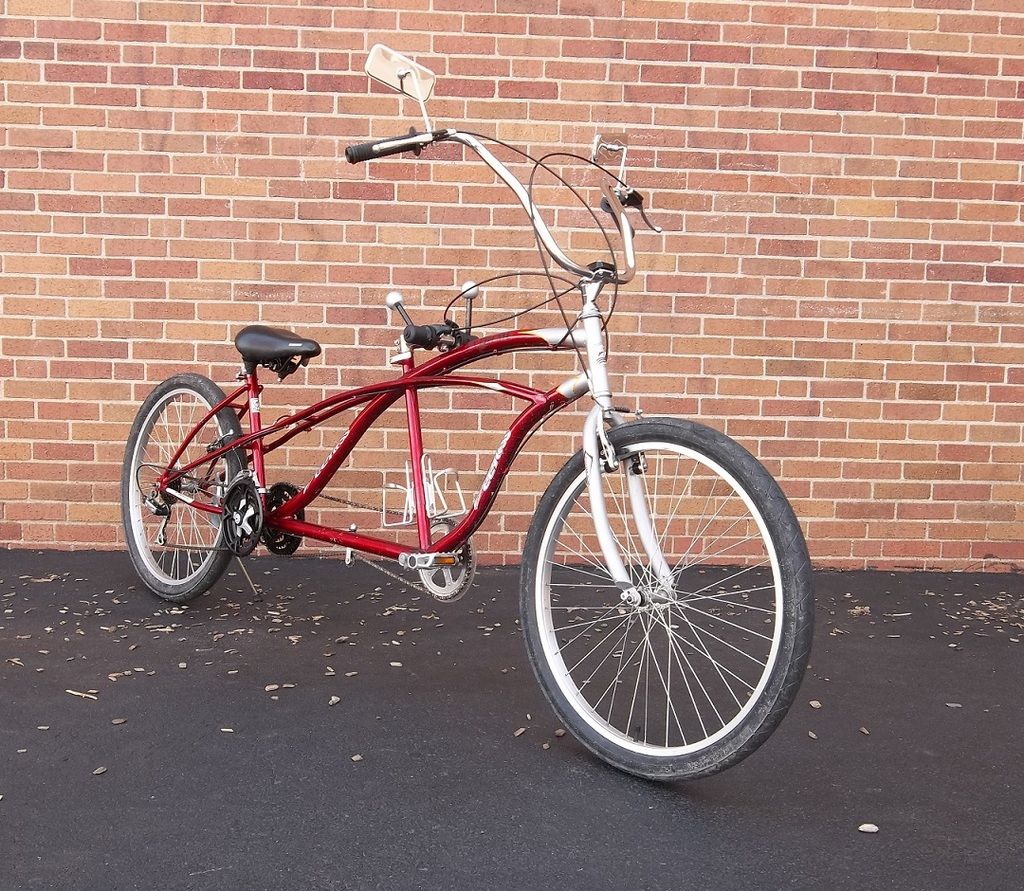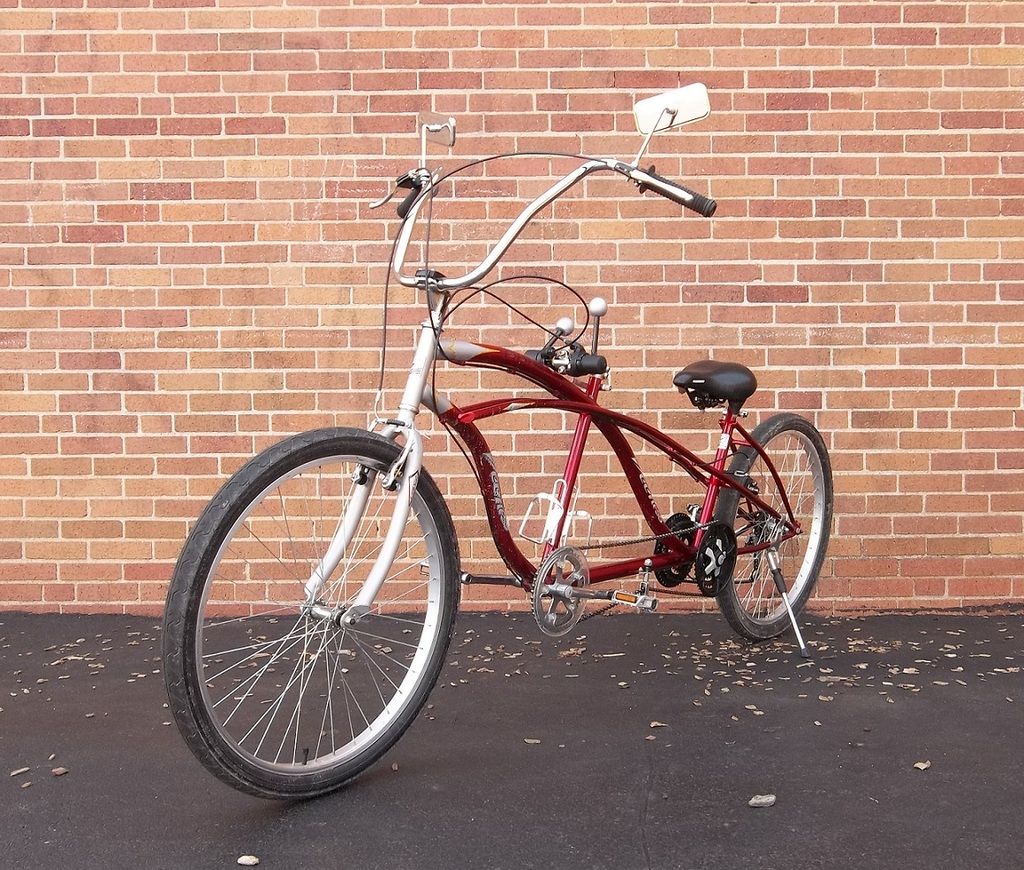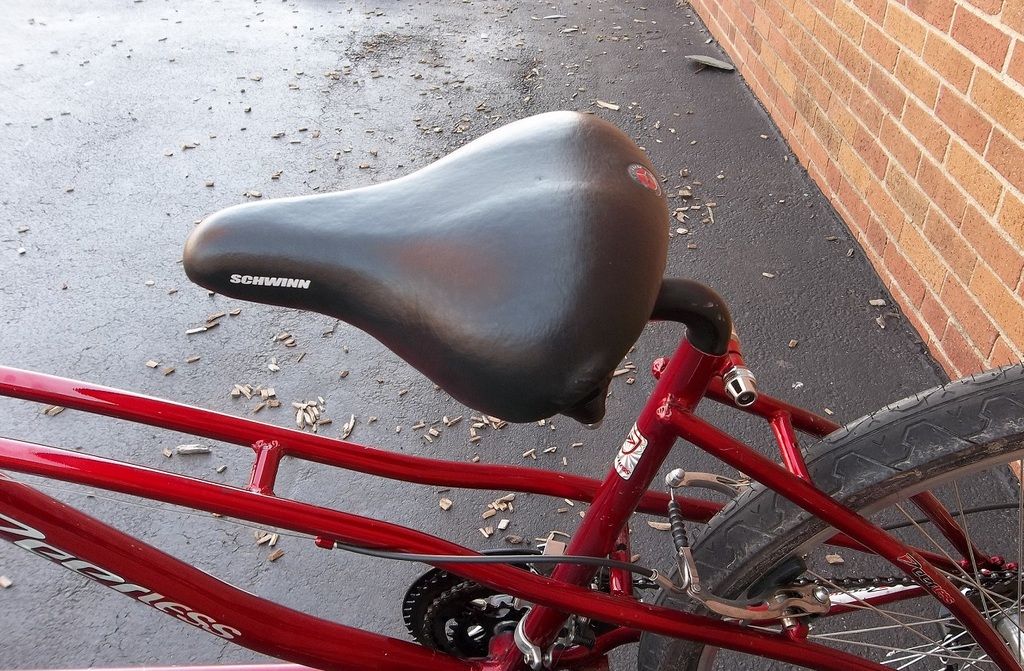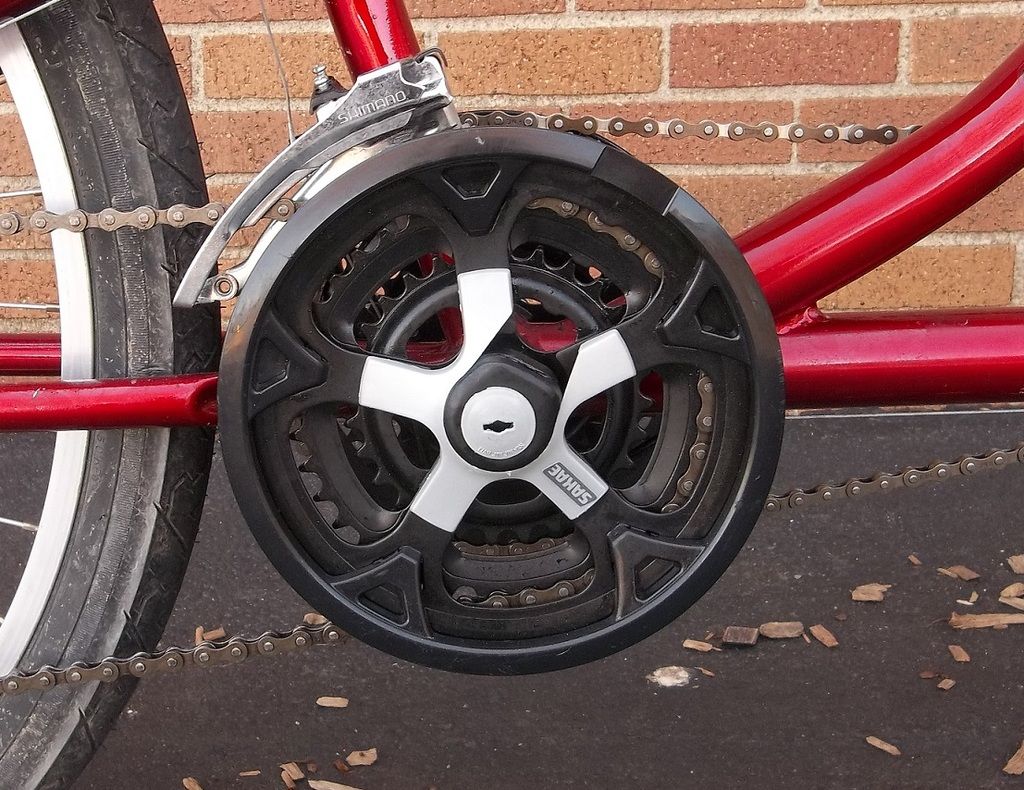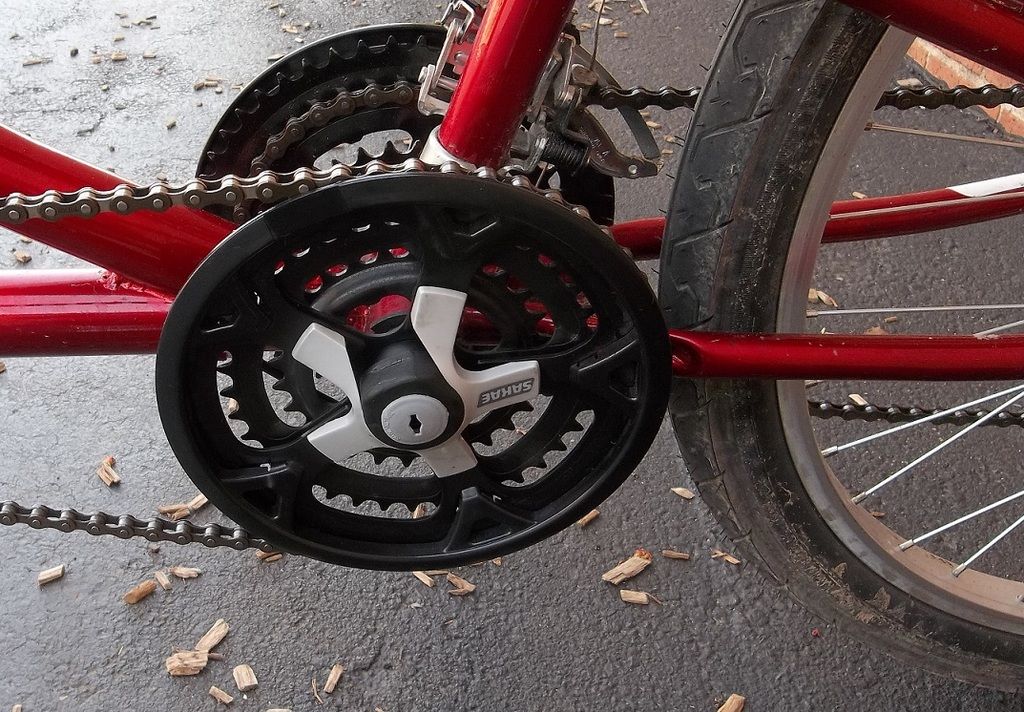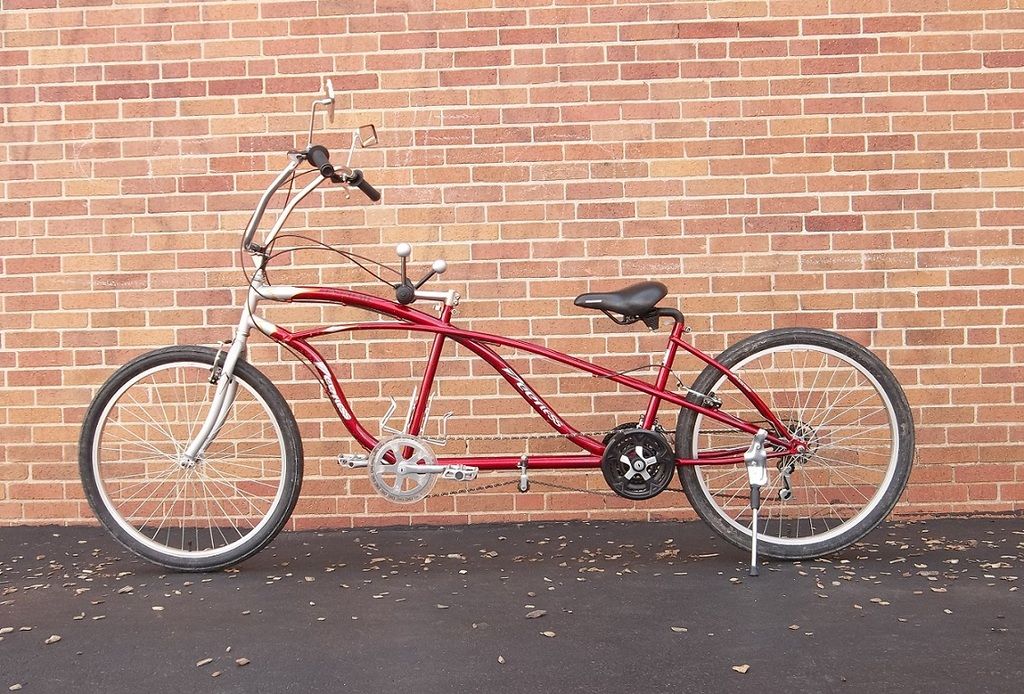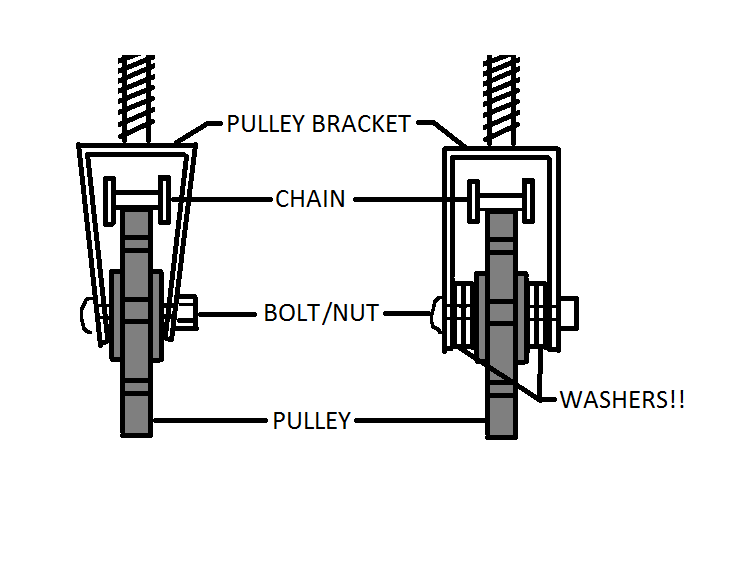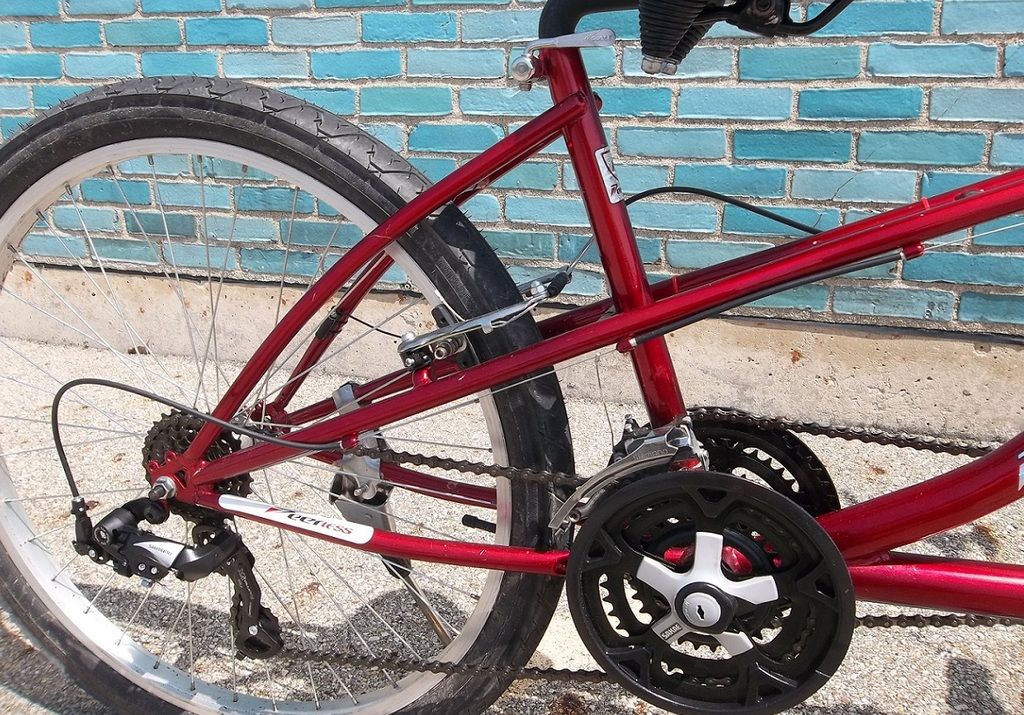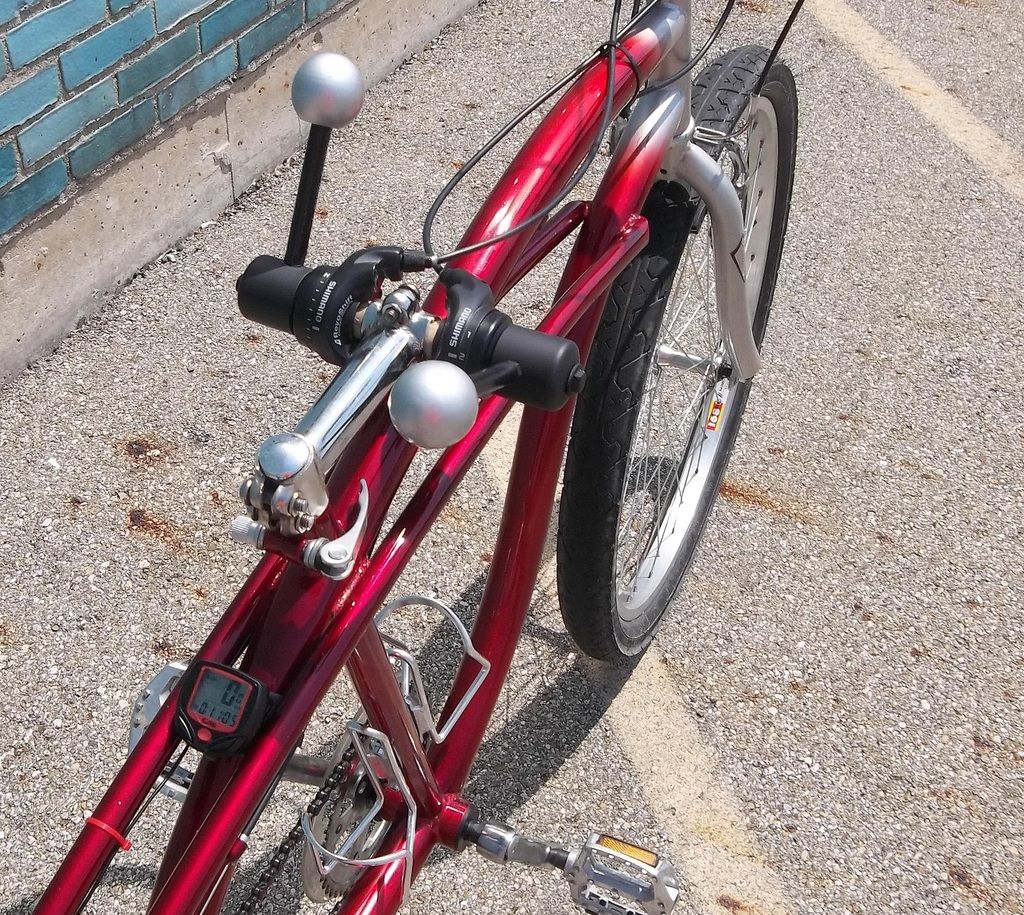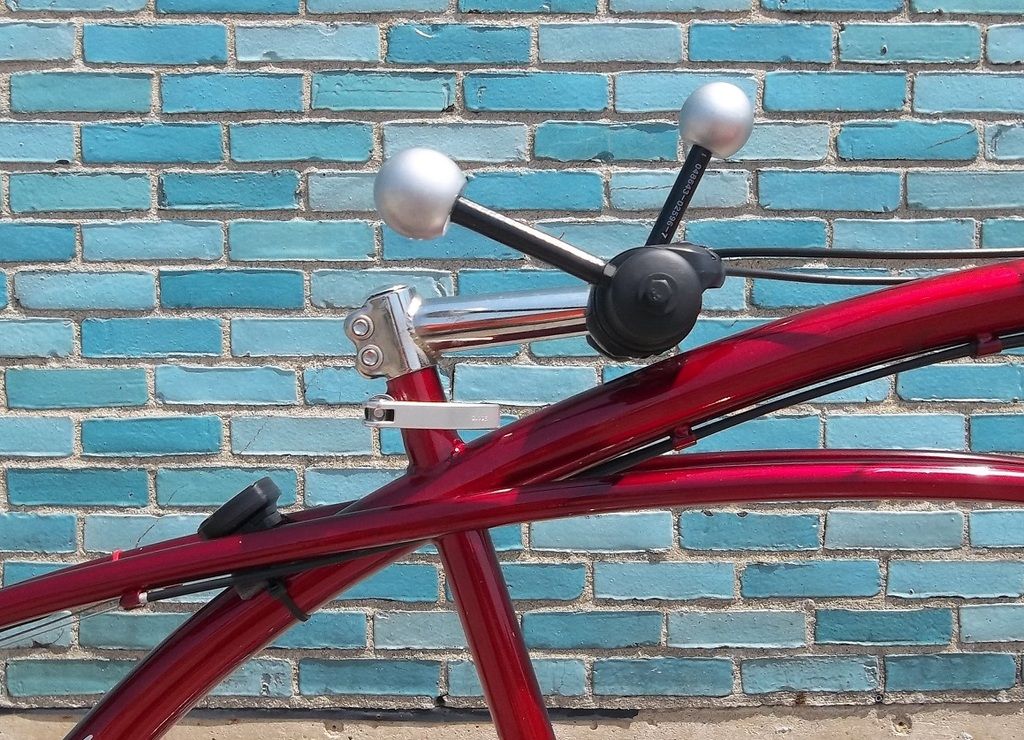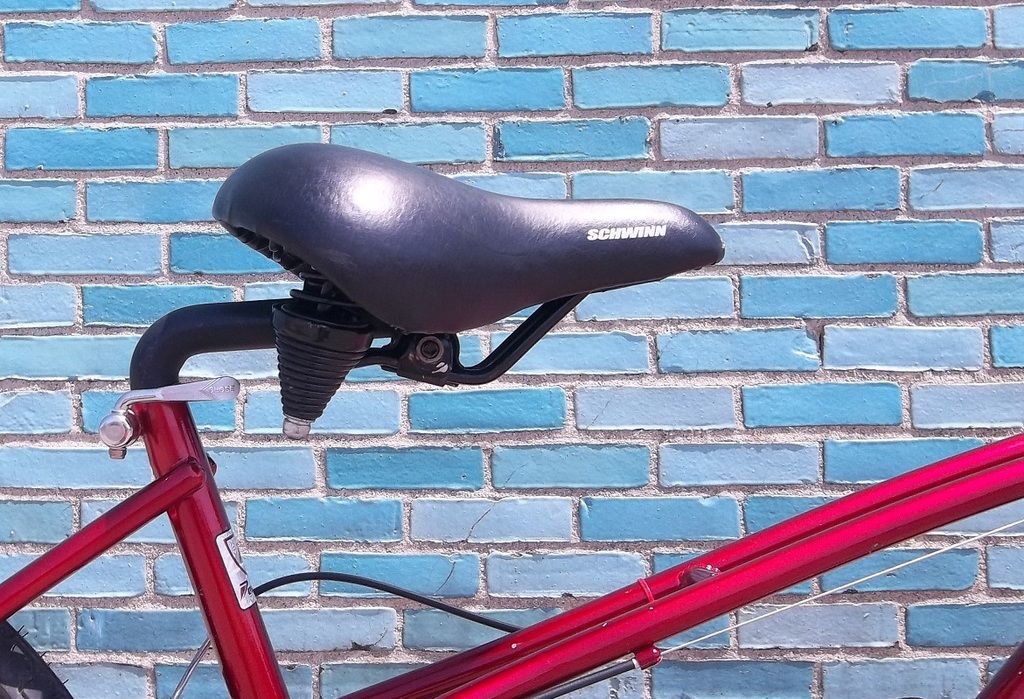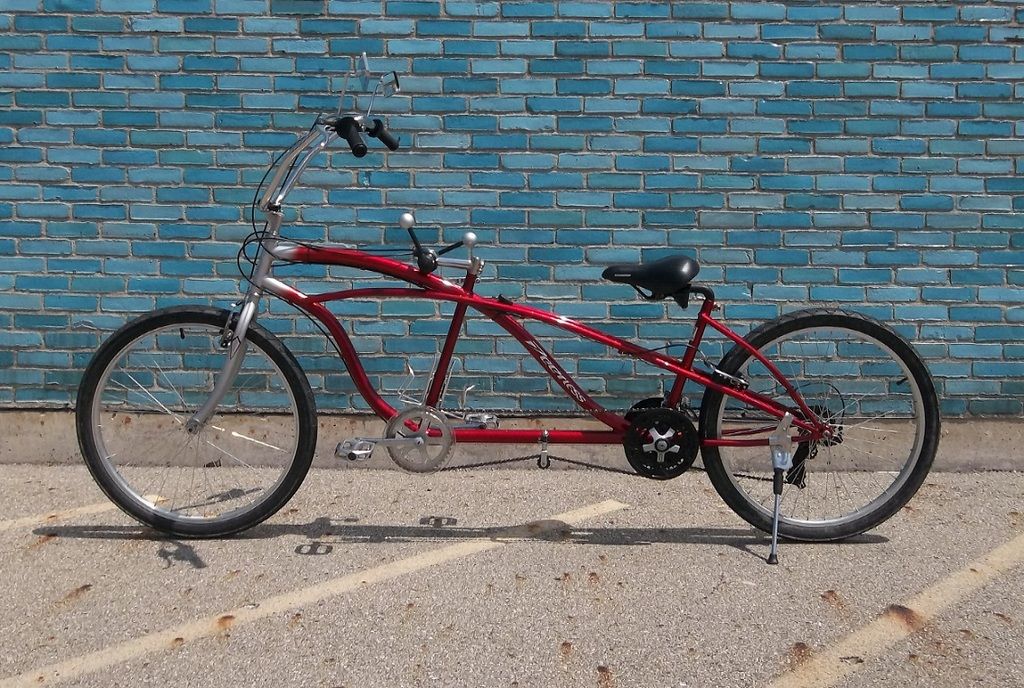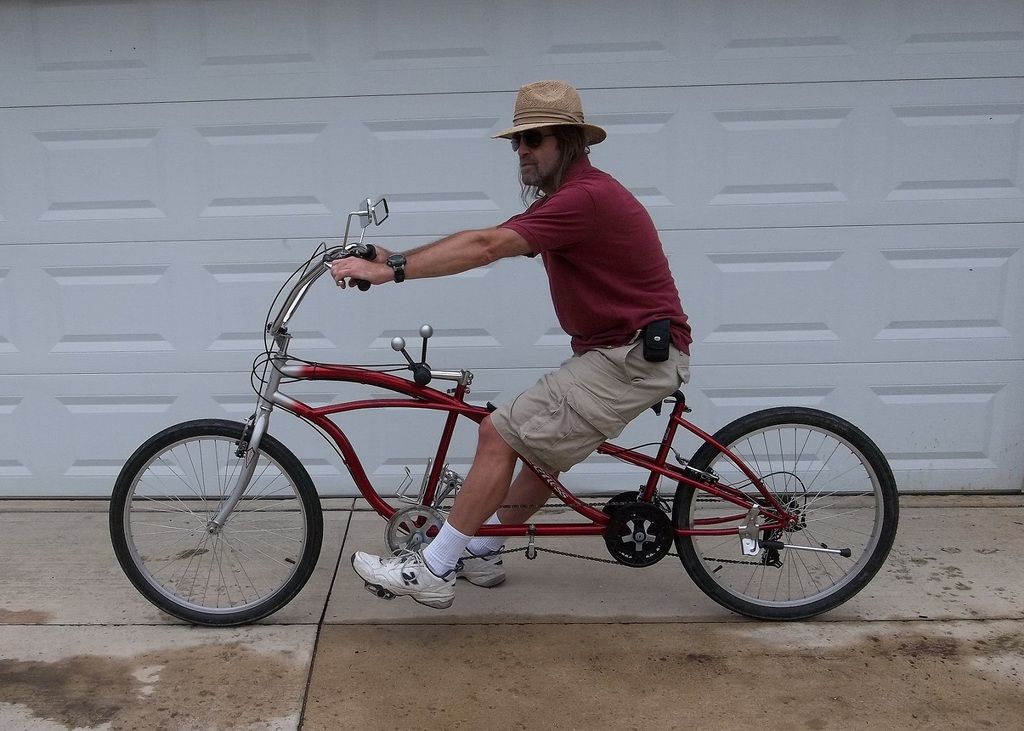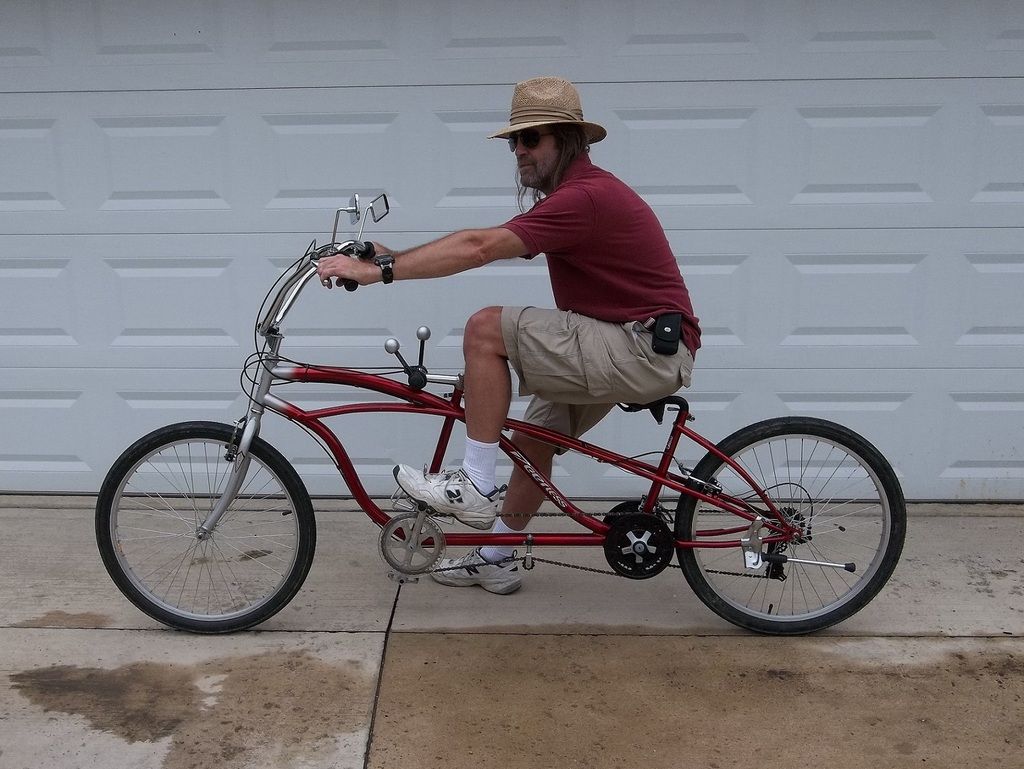(If anybody gets a sense of "deja vu" reading this thread, it's probably because I first talked about this bike and my plans for it back in December, when I first got it: http://ratrodbikes.com/forum/index....intage-tandem-into-stretch.88747/#post-874993 There's going to be some duplication as I attempt to consolidate everything down into this "build thread," so apologies in advance! It's also going to be a LONG thread, much like the bike!  There's also apt to be a little editing along the way as I've never tried an epic thread before, so...you've been warned.)
There's also apt to be a little editing along the way as I've never tried an epic thread before, so...you've been warned.)
I'd been lurking around this forum for a year or so before joining, and hanging around for a year marveling at the amazing stuff that RRB members create. My bike "building" skills are nowhere near the level of many of you guys -- I've tried my hand at welding exactly once, I've never used an angle grinder, I've never laced a wheel, and I haven't taken a hub or bottom bracket apart in about 40 years. If I had to put a label on my skills, I'd say I'm a "journeyman bicycle mechanic" -- I learned how to fix and repair my Huffy Cheater slick as a kid, to tune and adjust my three road bikes as a teenager, and to tune up and replace parts as needed on my first two mountain bikes as an adult. I also (eventually) learned the valuable lesson of "I tried to do it myself, not only failed but made it WORSE, and now it's going to cost three times as much to pay a shop to fix it than if I'd just paid them at the beginning." Whoops. :banghead:
To put it another way, I worked on bikes and kept learning, right up to the point where I hit a plateau and started breaking stuff when I tried to climb higher -- so I stopped TRYING to climb higher at that point. Now I've got more experience, and the internet, and this forum, and I'm starting over again -- but at least I don't have to start over from the very beginning!
The point that I'm flailing around to make is that this build (like my other "bolt-together builds") don't require much special knowledge and don't require ANY special tools. Anybody who's willing to learn a little basic bicycle maintenance (which is probably everyone here at RRB) and who's willing to do a little research could and can put together a bike like this.
...and all of you guys with specialty tools and a lot more mechanical skill could easily build a much better, MUCH COOLER version in half the time! So...on with the craziness!
So...on with the craziness!
Part I: Concept, Acquisition, and Original Plans
I'd been ogling and lusting after some of the amazing stretch cruiser builds around here, but I've been trying to finance my new bicycle hobby like I do some of my other ones: "I don't mind spending a little bit here and there, but I don't want to get sucked into spending hundreds of dollars all at once."
I didn't want to spend a hundred or two on a frame...then another hundred on wheels...and another hundred or three on miscellaneous parts. I've also written at length about the fact that I'm getting old (51 later this month) and live in a somewhat "rolling" area with hills, and at this point have ZERO desire for a single speed bike again. (I used to deliver about 75 big-city newspapers every day, weather permitting, on a 1940's or 1950's balloon tire Schwinn, up and down hills, and couldn't WAIT to get home and park it and get on my Schwinn Varsity and LeTour IV.)
"A tandem looks to be about the same size as a stretch cruiser, and some of them have seven or more speeds!" I realized. "Now I just have to find one -- preferably a cruiser-style frame -- on craigslist or something for cheap!" Eventually, after months of searching, I found one and a week's worth of hilarity (in hindsight) ensued while trying to contact the owner to purchase it. Thankfully, we finally connected and met up and I looked it over. Also in hindsight, I think I learned to never again buy a bike in a well-lit (but still dark) McDonald's parking lot in the cold December rain, but for the most part the bike looked to be in great shape and I was happy to pay $75 for it -- which even included delivery to my house a mile away!
As I said in that other thread, "The only things wrong with this bike when I got it were miniscule: it needed one new inner tube, the front derailleur needs adjustment since it won't drop into the low chainring, the stoker seat wobbles horribly because the "nose bolt" underneath fell off somewhere, the front chain was derailed and both chains need lubed. There are a few paint nicks in the "bottom tube" that connect the bottom brackets, but they're not even through the primer. I feel like I got a great deal on it, even though it's a department store bike, probably built in the same Chinese factory where they build the Micargi and Walmart Schwinn tandems. The hubs were well greased, the bottom brackets felt smooth on my one short ride around the block, and the rims were almost perfectly straight when I got the bike. (The derailleurs and other components are pretty low-end, but I can always upgrade them with [I think] standard mountain bike parts.)"
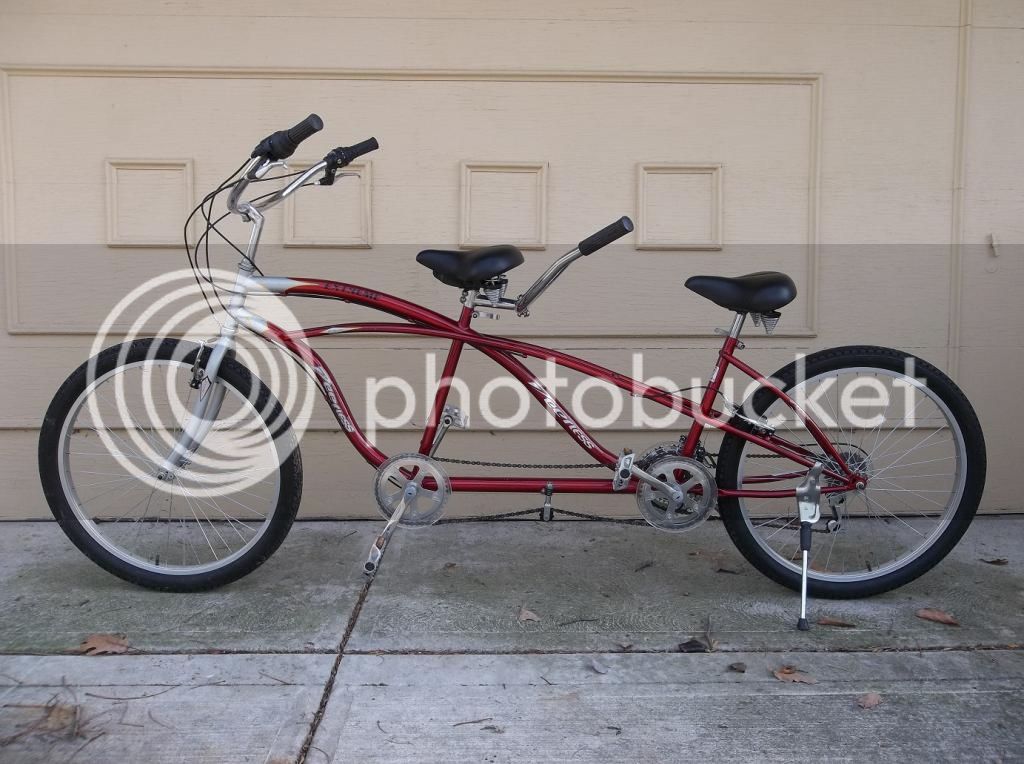
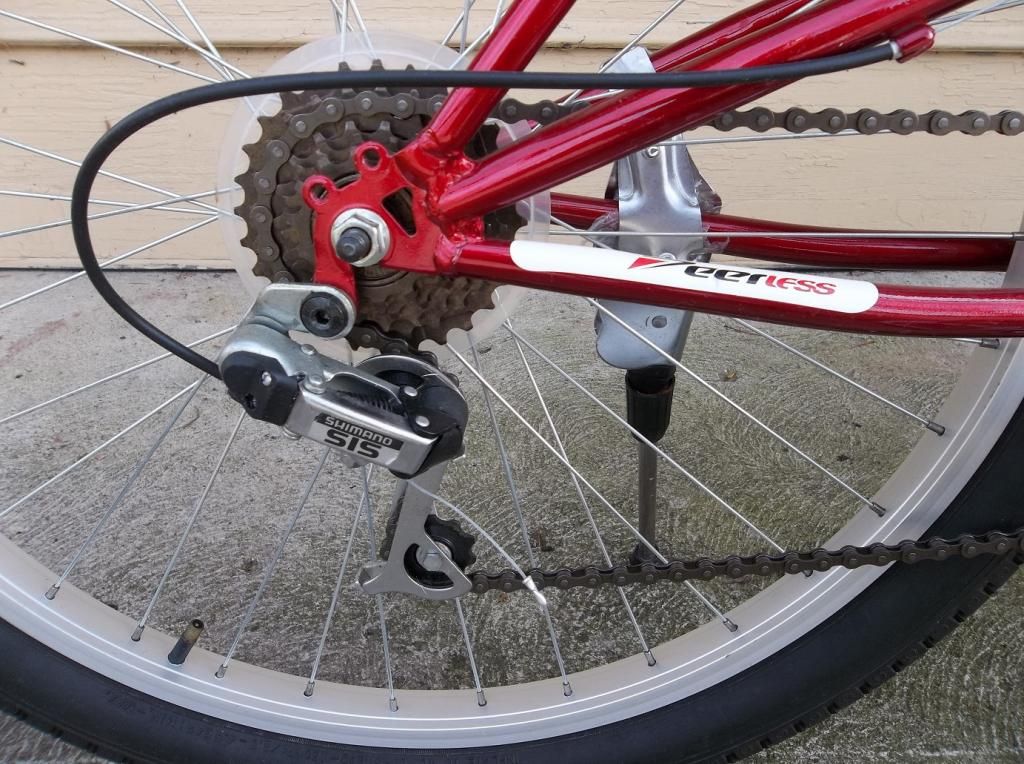
As I also said in that other thread, "This may be the shiniest bike in "Fresh Finds" in 2014, huh?"
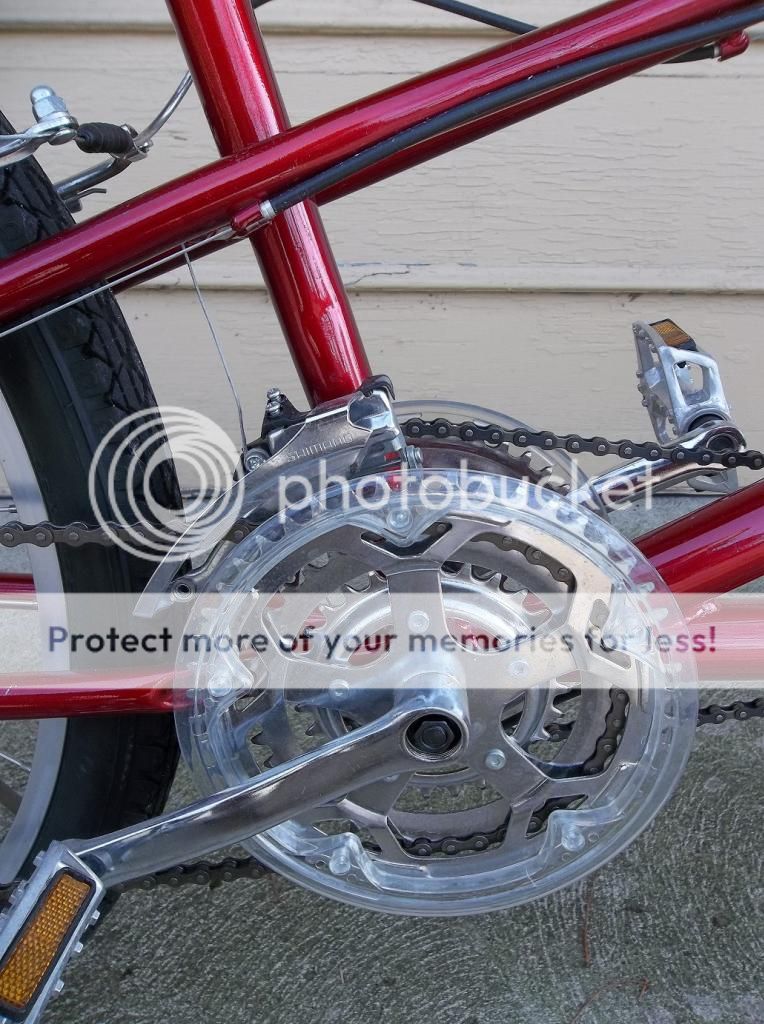
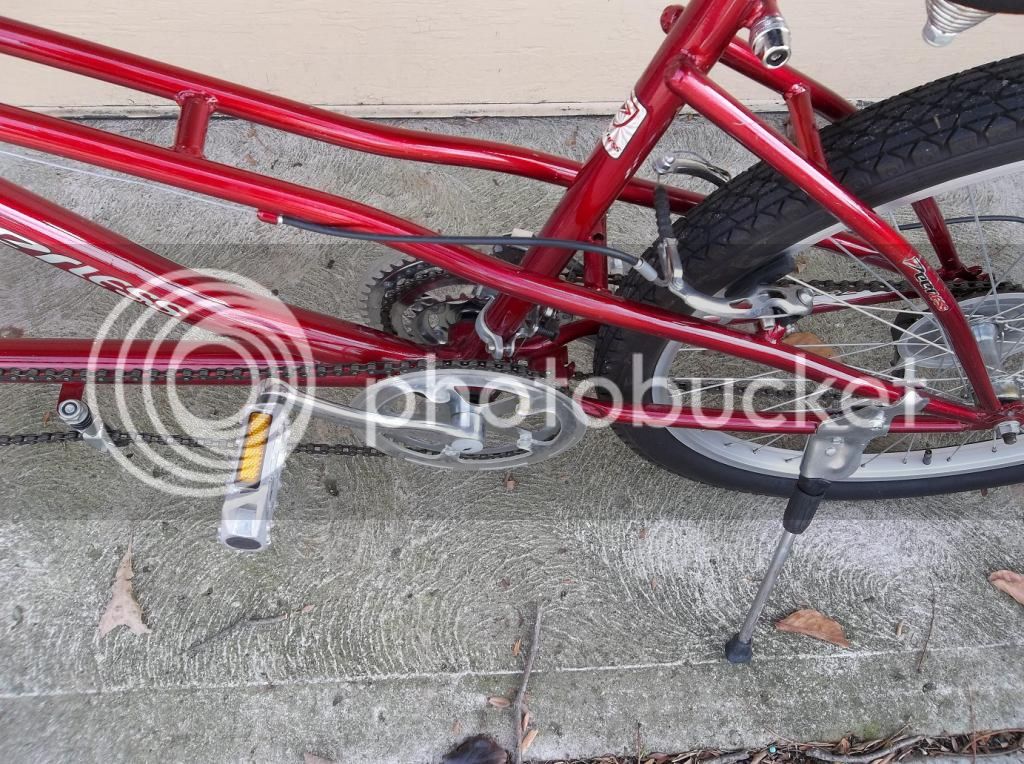
My original plan, which I mostly adhered to, was to remove the front seat and stoker handlebar, move the rear seat forward with a custom solid post from slowriderz, remove the rear cranks somehow, replace the front handlebar with apehanger bars, build "stick shifters" out of the stock Grip Shifts and move them back to the middle of the frame.
Also, to make things both easier AND more difficult, I decided that I didn't want to make any permanent changes to the original bike itself -- I wanted to be able to change it back into a tandem if I ever wanted or needed to.
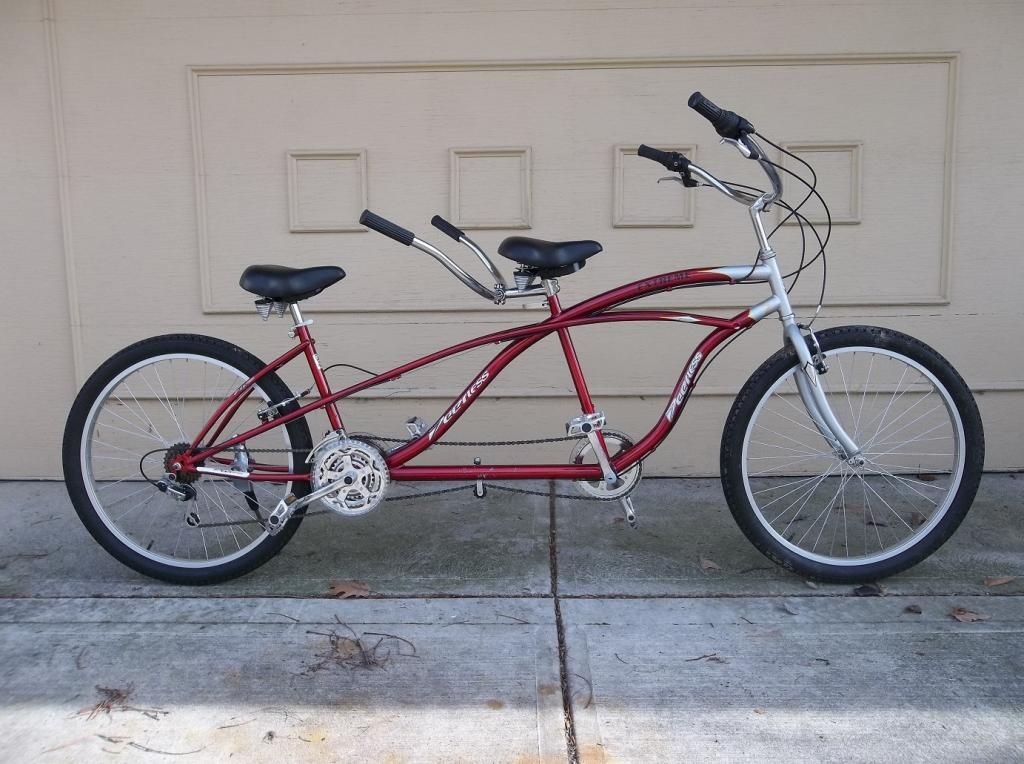
I'd been lurking around this forum for a year or so before joining, and hanging around for a year marveling at the amazing stuff that RRB members create. My bike "building" skills are nowhere near the level of many of you guys -- I've tried my hand at welding exactly once, I've never used an angle grinder, I've never laced a wheel, and I haven't taken a hub or bottom bracket apart in about 40 years. If I had to put a label on my skills, I'd say I'm a "journeyman bicycle mechanic" -- I learned how to fix and repair my Huffy Cheater slick as a kid, to tune and adjust my three road bikes as a teenager, and to tune up and replace parts as needed on my first two mountain bikes as an adult. I also (eventually) learned the valuable lesson of "I tried to do it myself, not only failed but made it WORSE, and now it's going to cost three times as much to pay a shop to fix it than if I'd just paid them at the beginning." Whoops. :banghead:
To put it another way, I worked on bikes and kept learning, right up to the point where I hit a plateau and started breaking stuff when I tried to climb higher -- so I stopped TRYING to climb higher at that point. Now I've got more experience, and the internet, and this forum, and I'm starting over again -- but at least I don't have to start over from the very beginning!
The point that I'm flailing around to make is that this build (like my other "bolt-together builds") don't require much special knowledge and don't require ANY special tools. Anybody who's willing to learn a little basic bicycle maintenance (which is probably everyone here at RRB) and who's willing to do a little research could and can put together a bike like this.
...and all of you guys with specialty tools and a lot more mechanical skill could easily build a much better, MUCH COOLER version in half the time!
 So...on with the craziness!
So...on with the craziness!Part I: Concept, Acquisition, and Original Plans
I'd been ogling and lusting after some of the amazing stretch cruiser builds around here, but I've been trying to finance my new bicycle hobby like I do some of my other ones: "I don't mind spending a little bit here and there, but I don't want to get sucked into spending hundreds of dollars all at once."
I didn't want to spend a hundred or two on a frame...then another hundred on wheels...and another hundred or three on miscellaneous parts. I've also written at length about the fact that I'm getting old (51 later this month) and live in a somewhat "rolling" area with hills, and at this point have ZERO desire for a single speed bike again. (I used to deliver about 75 big-city newspapers every day, weather permitting, on a 1940's or 1950's balloon tire Schwinn, up and down hills, and couldn't WAIT to get home and park it and get on my Schwinn Varsity and LeTour IV.)
"A tandem looks to be about the same size as a stretch cruiser, and some of them have seven or more speeds!" I realized. "Now I just have to find one -- preferably a cruiser-style frame -- on craigslist or something for cheap!" Eventually, after months of searching, I found one and a week's worth of hilarity (in hindsight) ensued while trying to contact the owner to purchase it. Thankfully, we finally connected and met up and I looked it over. Also in hindsight, I think I learned to never again buy a bike in a well-lit (but still dark) McDonald's parking lot in the cold December rain, but for the most part the bike looked to be in great shape and I was happy to pay $75 for it -- which even included delivery to my house a mile away!
As I said in that other thread, "The only things wrong with this bike when I got it were miniscule: it needed one new inner tube, the front derailleur needs adjustment since it won't drop into the low chainring, the stoker seat wobbles horribly because the "nose bolt" underneath fell off somewhere, the front chain was derailed and both chains need lubed. There are a few paint nicks in the "bottom tube" that connect the bottom brackets, but they're not even through the primer. I feel like I got a great deal on it, even though it's a department store bike, probably built in the same Chinese factory where they build the Micargi and Walmart Schwinn tandems. The hubs were well greased, the bottom brackets felt smooth on my one short ride around the block, and the rims were almost perfectly straight when I got the bike. (The derailleurs and other components are pretty low-end, but I can always upgrade them with [I think] standard mountain bike parts.)"


As I also said in that other thread, "This may be the shiniest bike in "Fresh Finds" in 2014, huh?"


My original plan, which I mostly adhered to, was to remove the front seat and stoker handlebar, move the rear seat forward with a custom solid post from slowriderz, remove the rear cranks somehow, replace the front handlebar with apehanger bars, build "stick shifters" out of the stock Grip Shifts and move them back to the middle of the frame.
Also, to make things both easier AND more difficult, I decided that I didn't want to make any permanent changes to the original bike itself -- I wanted to be able to change it back into a tandem if I ever wanted or needed to.

Last edited:






 (Thank you again, Chad -- but that was totally unnecessary and above and beyond my expectations!
(Thank you again, Chad -- but that was totally unnecessary and above and beyond my expectations! 